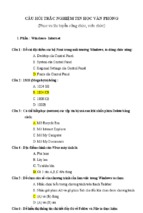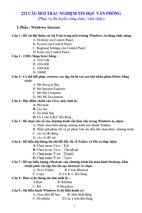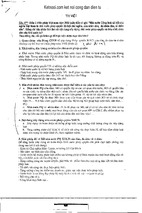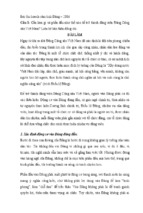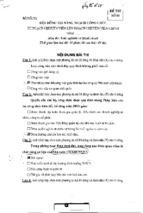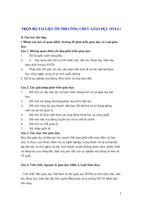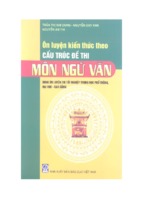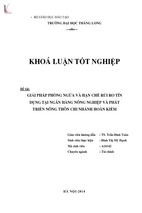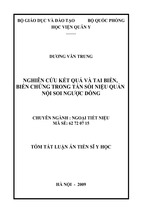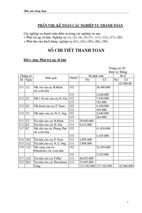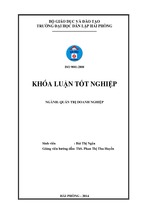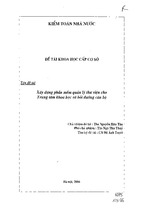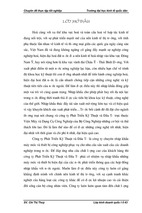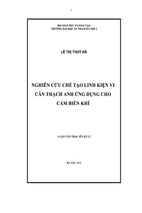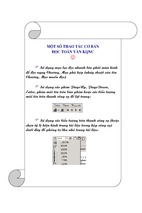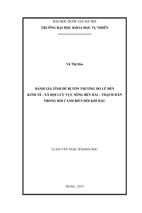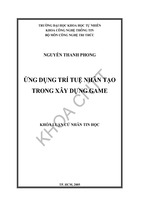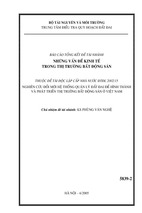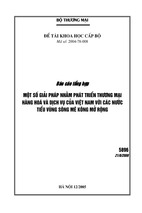Improvement of pharmaceutical services in hospitals through Kaizen Lean methodology
Improvement of pharmaceutical services in hospitals through Kaizen Lean methodology
Kaizen Institute
João Pedro Faria dos Santos
Department of Engineering and Management, Instituto Superior Técnico
Abstract
Due to the competitive pressure that companies are being targeted, it is extremely urgent to take measures to
improve profitability with greater use of resources. Therefore, the main goal is to increase productive capacity.
With this aim, Kaizen Lean systems application have been increasing in order to map the value chain of a company
and, through continuous improvement techniques, eliminating activities that do not add value to the customer.
Based on this context Empresa XPTO, leader in the healthcare sector in Portugal, aims to reduce the waste of
several processes undertaken in the hospital’s Pharmacies.
The present paper provides a set of Lean Kaizen tools that, when properly integrated, permits to draw a set of
alternatives to improve the internal circuit of medicines, by focusing on activities that add value to the customer.
Supported by examples from literature review, this paper describes a solution that involves the gathering and
analysis of data, in order to identify improvement opportunities for the initial state of the several processes
developed. Based on this approach, it was designed a set of alternatives to implement in six pharmacies in a fivemonth period.
The main results obtained in the first month, after the Implementation of improvements phase (February/14), were
an annual reduction of 11% of the stock level and 0.29 average ruptures per month on each hospital.
Keywords: Pharmacy, Gemba, Kaizen Institute, Lean, Muda, Total Flow Management
1. Introduction
In the current economic climate it is essential to
reduce waste and increase business efficiency
(Waring and Bishop, 2010).
Therefore, it is crucial to find low cost solutions
that, at the same time, generate more value for the
customer and thus for the company (Waring and
Bishop, 2010).
According to the Kaizen methodology that
supports a continuous improvement on processes,
the way to achieve sustained growth of earnings and
sales is done by improving Quality, Cost, Level of
Services Rendered and motivation of employees
(QCDM) (Bardhan and Thouin, 2013).
The Kaizen methodologies come in five
fundamental principles: Creating customer value;
Mapping the value chain to make a survey of the
opportunities for improvement; Creating flow;
Involvement of all people and continuous
improvement (Kaizen Institute, 2013a).
Applying these principles implies the reduction of
Muda processes. Muda is the Japanese term for
waste, ie activities that add no value to the process
(Kaizen Institute, 2013a).
According to Masaaki Imai (2012), Muda is
represented by a model that classifies waste into
seven types: movement of people; movement of
material/information; people standing; material
stopped; overproduction; reprocessing and defects
that cause rework.
The health sector is one of the most important
sectors in the sustainability of a country’s economy,
due to its implications in societies (Reeves et al.
2014). It involves a set of very complex processes
and materials, which generates several kinds of
Muda to the customers.
Empresa XPTO is a leader in the health sector in
Portugal. With several facilities across the country
they aim to achieve the excellence in customer
service.
In order to achieve this, that has been the
company’s goal, together with the competitive
pressure, the Kaizen Lean methodologies were
implemented in order to improve the whole circuit of
1
the medicine, since it is approved in the hospital
Pharmacy until it is administered to the patient.
The goal of this paper is to conduct a survey
phase of the initial state, by collecting and analyzing
data, to subsequently implement a solution that
integrates several tools of continuous improvement.
In Section 2, a brief review will be made to the
available
bibliography
about
Kaizen
Lean
methodologies applied to health. In Section 3 it will
be presented the case study with the description of:
Kaizen Institute, Empresa XPTO and the problem that
is being analysed. In Section 4, the Implementation
model will be described. In Section 5 it will be
discussed the results achieved and finally in Section
6, the conclusions reached and the proposed actions
to improve the results.
2. Literature review
2.1 Lean Thinking
Lean thinking is defined as the goal of reducing or
eliminating wastes throughout the value chain of a
company (Melton, 2005), focusing only on the
company’s activities that create value for the
customer.
One of the most formal and complete definitions
found in the literature defines Lean production as a
multidimensional goal that encompasses a wide
variety of management practices, such as just-intime (JIT), quality systems, work teams, production in
cells and supplier management, in one integrated
system (Shah and Ward, 2003).
Melton (2005) suggests a structure that aims to
scroll through all stages of a project of continuous
improvement properly respecting Lean thinking.
As expressed in Figure 1, the process begins by
collecting data in order to map the activities, so that
operations can be divided into value added steps and
waste steps. This step, as all of the following, must
be performed with the aid of people who works in
Gemba (Gemba means shopfloor). After performing
this task, an analysis of data to find causes of the
problems encountered is taken. The next step
consists in designing alternatives to be implemented.
These alternatives, usually involve the creation of
new processes. Finally, the last two steps are the
solution Implementation and subsequent evaluation
of results (Melton, 2005).
Collect Data
•Involves people who run the processes daily to
observe current state and look for improvement
opportunities.
Analyse Data
•With cross-functional start to diagnose the issues
through data analysis that was collected in the
first step.
Proposed
Alternatives
•Defines new processes or changes for the actual
processes to eliminate waste. This step is based on
data analysis.
Make Change
Measure
Benefits
•The Implementation of the new paradigms is
supported by training and measures to eliminate
variability.
•KPIs are important to help measuring the
performance of the new processes to evaluate
deviations of the objective value.
Figure 1 – Lean Thinking Structure
Font: Melton, 2005
Lean and Kaizen concepts are often confused, but
Lean is defined as the goal to reach (no waste),
Kaizen is defined as the method used to achieve it
(Melton, 2005).
Lean thinking was born in the manufacturing
sector, more specifically in the automotive industry
(Toyota plant in Japan) (Womack et al., 1990). Since
1988, the application of Lean methodologies have
increased and also being requested in the service
sectors (Bowen and Youngdahl 1988). Both authors
found that manufacturing firms had higher gains
when clients visited the facilities. This is a recurrent
action on services sectors like hotels, hospitals,
restaurants, banks and other industries. The main
barrier in the paradigm shift was the replication of
the tools developed in industrial environment in the
services sector (Bowen and Youngdahl, 1988).
According to Suárez-Barraza et al. (2012) the
application of Lean in services reduces waste in
enterprises by increasing flexibility of activities and
product quality, while reducting costs and Lead
Times.
Souza (2009) presents an example of Lean
Implementation in the retail sector. This sector,
combined with health, is one of the sectors where
Lean Services methodologies have been well
developed. According to the author, the retail chain
Tesco, by implementing Lean in its supply chain,
2
achieved a higher quality of the service and a
considerable improvement in the financial results of
the company (Souza, 2009).
The case study by Martin et al. (2013) presents an
application example of Lean techniques in the health
sector. It describes a hospital in the UK where the
orthopedic radiology department was object of
constant complaints from customers due to high
waiting times and low service levels. The results
presented by Martin et al. (2013) shows that the new
supply logic in the radiology service offers a higher
quality for the patient simultaneously with high
levels of employee satisfaction. All these actions are
reflected in an increased productivity.
The case study presented by Martin et al. (2013)
highlights the importance of Lean in services,
presenting an application example of the
methodologies in the health sector.
2.3 Lean Healthcare
Since 2002 until now, companies such as Kaizen
Institute, have been increasingly investing in the
adaptation of Lean techniques to the health sector
(Souza, 2009).
Facilities like hospitals, pharmacies, clinics among
others, are structures with a set of very complex
operations. These operations require very high
investments, either in equipment or medicines
(Robinson et al. (2012)). The application of Lean
methodology in terms of health, ie Lean Healthcare
emerges with the application of methodologies of
business reengineering (Radnor and Boaden, 2008).
The following points will present the application
of the five principles of Kaizen to healthcare sector
based on documentation provided by Empresa XPTO
and Jones and Mitchell (2006):
Create Value: activities that create value are
defined by patients who work as a primary customer
service. The patient should be involved as far as
possible to make this feel like a part of the diagnosis,
and medication preparation process.
Value Stream Mapping: Mapping all the
processes in the hospital’s pharmacies to easily
define unnecessary routes simultaneously optimizing
the existing flows.
Creating flow: Getting all the processes
developed within the hospital pharmacy done fluidly,
without constraints and minimizing the distances.
Pull Planning: Except for single-dose, no
other activity is based on a pull strategy. This
principle focuses on creating a purchasing system
with zero wastes, working in a system of just in time.
Continuous
Improvement:
Creating
standards, ie defining the most efficient way to
perform an action simultaneously developing
standards that will help employees to perform their
activities. These improvements should always be
based on a PDCA cycle.
Escobar and Vega (2013) presented a study on
the applicability of the principles of Kaizen
management to a Spanish hospital. After applying
the tools, the authors observed not only a reduction
in stocks and delivery times but also an increased
quality of service. In addition to these benefits, there
was also an increase in worker satisfaction resulting
in improved productivity.
In the health sector, there is a comprehensive set
of waste that should be eliminated. The Pharmacy,
due to all the activities, carries out a high tendency
to create waste
According to the Seven Muda Model in the health
sector it is important to select the tools that best fit
the application of Kaizen methodology in Health
(Imai, 2012).
2.4 Kaizen Tools
Based on published examples and following the
structure advocated by Masaaki Imai, in this Section
will be presented the tools with the greatest impact
on a continuous improvement project in health
sector.
The Kaizen tools with greater importance in
reducing waste in the health sector are:
Five S: Designed by Kaoru Ishikawa in Japan
this tool works as a checklist that aims to create work
habits to provide better organization, cleanliness and
discipline in the workplace (Imai, 2012 and Melton,
2005).
Visual Management: Visual management is
divided in several aspects from the site identification
and normalization to the visual tracking performance
Indicators. An example of visual tracking is placing a
highly visible area of the Gemba, showing the
graphics with the most important Indicators to
evaluate the problem under analysis (Melton, 2005).
3
Kanban: In JIT system, the production
process and the movement of materials is controlled
by a technique called Kanban (Baykoq and Erol
(1998)). Kanban is a subsystem of the Toyota
Production System that was created to level the
stock, control production and supply of components
and in some cases, raw material.
Leveling: A major reason for the variability
of the stock is the purchasing policy based on a set of
forecasts. Consequently, it is almost impossible to
eliminate the variability of a production system. In
this regard, most production practices serve to help
controlling the excess of stock (Kanban) or reducing
variability of a system by, for example, daily shopping
thereby reducing the time scale of the predictions
(Huttmeir et al. 2009). Lean tool that encompasses
all these practices leveling and reducing variability is
called heijunka.
Value Stream Mapping (VSM): Technical
mapping of a company’s value chain with the aim of
drawing the current state and define opportunities
for improvement in the process. Works as a starting
point for continues improvement projects
(Jimmerson et al. 2005).
The five tools presented are all interconnected
with the goal of making possible the Implementation
and structured problem solving.
After establishing the problem, the mapping of
flows (VSM) takes place in order to find
opportunities for improvement.
Defined all the causes of the problem, in terms of
inventory management, remains all other tools like
Kanban solution or leveling to implement. Finally, as
a complement to the operational resolution there
are tools such as audits and 5S Visual Management
that allows a jobs improvement along with the
Implementation of the established discipline.
With Literature Review, it is concluded that the
Kaizen Lean methodologies have been applied in
several areas of the health sector. In this paper, as it
was said before, there is a focus on services of
hospital’s pharmacies. In the following Sections the
several steps of the Implementation phase will be
presented along with the improvements to the
monitoring internal circuit of medicines.
3. Case-study
Empresa XPTO consists of a set of units providing
healthcare services and is then split into three
groups: Private Hospitals (PH), Private Clinics (PC)
and Public-Private Hospitals (PPH).
The units with the highest weight in the
organizational structure of the XPTO enterprise are
Private Hospitals 1 and 2, founded in 1945 and 2001
respectively. The procedures performed in the
pharmacies of each unit are very similar differing
only in the size and number of customers. The PH2
has been selected as the pilot unit for this study
because it includes about 95% of the procedures
performed in a pharmacy.
The main processes performed in a hospital
pharmacy are:
• Preparation of Unit Dose (UD): medications are
sent to internal patients at the Hospital according to
the prescriptions made by doctors (required by
Infarmed). The medications are managed by Pull
Planning depending on the doctor and the patient.
Associated with the preparation of UD there is a
designated activity without any value added
designed by the return of medicines that followed in
UD but were not administrated to the patients. This
happens because of: mistakes in the prescription of
the doctor, the patient checks out with no
information to Pharmacy or nurses administrate the
medication from the preparation of the next point;
• Preparation of Traditional Dose (TD): used to
supply existing stocks in each service. It serves to
support UD and also to respond to emergencies that
arise in services. By law, the administration of
medicines to internal patients should be done by UD,
but sometimes, by disorganization of nurses, this is
not a reality;
1
• Supply Operative Block and ICU : works like the
TD, but directed to supply these areas in particular
due to the associated restrictions;
• Warehouse Activities: Related to the two types
of preparation and supply there is a whole set of
tasks to accomplish as: goods receiving, storage,
picking systems, and management of warehouse
space. At the same time it is necessary to manage
the entire pharmacy stock as a function of the
products inputs and outputs.
• Purchase Order Management: in this process
the orders created in the actual inventory
management system are managed.
• Other activities: In addition to the activities
explained above, that includes a strong logistics
1
ICU – Intensive Care Unit
4
component, there are other specific activities of
pharmacists as Production Oncologic Medicaments
or products, preparation of Clinical Trial and even
Management Loans between hospitals.
To integrate these processes with Kaizen tools
there is a system called Kaizen Management System
(KMS) (Imai, 2012).
The pillars of KMS aim to improve the flow
management (TFM), the quality (TQM), the
machinery maintenance (TPM), the service
management (TSM) and the projects’ management
(IDM).
The main pillar used in this paper is called Total
Flow Management where the objective is the
creation of flow in the internal logistics of each
Pharmacy as well as external logistics, ie suppliers
and hospital services.
In short, the problem studied in this paper
entails to improve the efficiency of operations
developed in six hospital’s Pharmacies of a private
company that operates in healthcare. The main focus
of improvement concerns the reduction of capital
invested in stock in the six Pharmacies by
implementing a new policy for inventory
management. To support this goal it is necessary to
redefine the rules for picking and designing more
targeted areas to increase productivity.
4. Application of Kaizen Lean in Empresa XPTO
The introduction of Kaizen Lean methodologies in
Empresa XPTO followed a set of three phases:
Preliminary Analysis, Implementation and Follow-up.
Within these three phases the five steps of the
structure advocated by Melton were employed.
In this context, the Preliminary phase, developed
in PH2 as a pilot unit, consisted in collecting and
analyzing data which were the basis for the proposed
improvements. The Implementation phase matches
the fourth step of the framework developed by
Melton. Finally, the goals measurement is performed
during the Follow-up which also includes the creation
of new complementary solutions.
4.1 Preliminary phase
The starting point of this paper is to analyze the
current state of key processes developed in hospital
Pharmacies. For this, the respective collection and
analysis of data was performed simultaneously. A
process is defined as a set of operations. After these
two steps, and based on opportunites found, it is
required to design the solution approach with the
proposed improvements.
The processes performed in a hospital Pharmacy
which were analysed with VSM are: Order Process;
Reception and Storage; Unit Dose; Traditional Dose;
Repacking; Returns of medicines; Management of
expiry dates. In the scope of this paper, for each
process defined as critical to the Pharmacy, a value
analysis was done with a fluxogram to find major
opportunities for improvement throughout the
different operations. It was also performed an
analysis of stock levels as a complement to the order
process. A critical process is defined as a process
with a high weight in pharmacy in terms of impact in
stock. The processes selected as critical are: 1) Unit
Dose; 2) Order process; 3) Inventory analysis. In this
paper, an in-depth analysis to the order process is
made since this is the part with the highest impact in
the observed results. In order to control these
processes and to achieve the pre-defined targets for
this project, the following Key Performance
Indicators (KPI) were defined:
Daily Stock Level: This Indicator monitors
the results of the measures taken regarding to the
reduction of capital invested in stock. A daily
frequency registration was analysed due to the high
variability in the consumption of medicines during
the month.
∑
[1]
The total Value of Stock in a day is obtained by
summing the values of existing stock of each article
in Pharmacy (Si). In total there are n items in
inventory. The target value for this Indicator is a
reduction of 25% compared with initial stock.
• Daily Critical Stockout: It is intended to safely
monitor which products are stockout and the
respective main cause. The daily frequency was
analysed due to the fact that there are daily
consumption and, therefore, likelihood of stockout.
A Critical Stockout is defined as the absence of a
medicine in Pharmacy or anywhere else in the
hospital.
∑
[2]
The number of stockout per day ranges from 1 to
m, where m is the total number of requests not
5
satisfied per day. The target for this KPI is zero critical
ruptures.
• Daily Non-Critical Stockout: A Non-Critical
Stockout is defined as the absence of a medicine in
the pharmacy. However the medicine exists in stock
in a forward warehouse or in Traditional Dose
elsewhere in the hospital.
∑
[3]
The number of Non-Critical Stockout in one day is
obtained by adding the number of non-critical
stockout observed (RNCi), ie unmet medical
prescriptions for stock of Pharmacy. The target for
this Indicator is zero non-critical ruptures.
• Number of delivery orders per day: This
Indicator intents to study the impact of the new
model in the reception area of Pharmacies. Changing
the paradigm for creating purchase orders more
frequently with less quantity can create variability in
the daily receipt routine of each Pharmacy.
∑
[4]
The total number of lines is obtained by summing
the number of orders received per day. An order can
include several references to medicaments.
4.1.1 Value Analysis to Order Process
The order process is represented by the
fluxogram in Figure 2 where is described the
sequence of operations which are currently
performed. This fluxogram represents the result of
step one and two of Melton structure. Based on this
analysis to the different operations it was found
different types of waste such as: 1) Transactions not
standardized; 2) Purchase central did not had view
Print the list of
items ordered last
month
Assessing the needs
created by each
element of Pharmacy
Insert manually the excel
information in SAP
on the needs of Pharmacies; 3) The needs of
purchases followed a Push model; 4) Existence of
several manual operations; 5) Reprocessing of files
and lists of needs; 6) Printing incomplete purchasing
lists.
The main consequences of these wastes are the
errors generated in the values records the system
outputs and inputs and the creation of purchasing
lists not synchronized with reality.
In addition to the fluxogram of order process, an
analysis was performed to stock level management
since the wrong orders can increase stock level and
consequently update the stock coverage. From this
analysis it was concluded two main things: 1) there
are some gaps between the actual stock and the
stock in the system; 2) Medicines based on the
volume of consumption that would provide a
different approach to each group of products are not
being classified.
In addition, in data analysis phase it was done an
ABC analysis to split Products between rotative
products (Type A) and slow movers (B+C).
The results are represented on Table 1.
Table 1 – PH2 Product typification with ABC Analysis
Products A
Products B + C
#Products
Lead Time
[Days]
Daily
Consumption
Stock
Average
Coverage
[Days]
189
11,22
11,44
37.745 €
33,81
Set the Order Quantity
only based on stock
level
Send the list to
purchase central
#Products
Lead Time
[Days]
Daily
Consumption
Stock
Average
Coverage
[Days]
1041
7,91
3,36
226.618 €
21,95
Rewrite the list to
an excel file
List validation
Figure 2 – Fluxogram with sequence of operations in the order process
6
Comparing Lead Times, from table 1, the average
coverage of products A is three times higher. The
least rotation products (B+C) stock coverage is 2,8
times higher than Lead Time of these items. If it was
created a new paradigm based on zero level of stock,
it would be possible to reduce stock coverage to
have a value that matches the Lead Time. In other
words, Empresa XPTO can reduce stock level working
with the just-in-time philosophy.
Considering the Lean structure developed by
Melton, the next step is the solution design with
alternatives to the actual paradigms.
The proposed alternatives meet the objectives
initially defined, including a link between Kaizen Lean
tools that were selected and the opportunities for
improvement found previously.
Therefore, an objective of 25% reduction in stock
level was defined by each hospital Pharmacy. This
was a target imposed by Empresa XPTO as a result to
achieve within six months following the end of the
implementarion phase. The Implementation program
will place in practise the opportunities found to the
order process. It is divided in four main phases:
Phase 1 - Organization of layouts
To reduce the probability of wrong orders it is
important to turn visual the purchase requirements.
Five S tool and visual management are the tools
chosen to implement this idea. Based on an ABC
analysis, the layout design was defined, grouping
medicines based on consumption rotation;
Phase 2 – Process normalization
To normalize the purchase process a standard was
defined with the best practices to make an order. It
should be then shared between all the Pharmacies to
guarantee normalization. The main ideia of this
phase is to support all the processes with standards.
Phase 3 - Smoothing stock levels
To meet the reduction target, it was defined a new
model to manage inventory with a Continous Review
Policy (CRP). With this new logic pharmacies have a
Replenishment Point for each product and a fixed
Quantity to Order. The technique developed to
create an order is the Kanban Cycle with four stages:
1) Kanban is in the Replenishment Point; 2) After the
consumption of the last products before Kanban,
starts the purchase process by placing the Kanban in
the "Ordering Kanbans" box; 3) With Kanban’s help,
the purchased order is created and, after that, it is
placed in the “Ordered Kanbans” box; 4) Once the
order is received, the product and the Kanban are
stored.
Phase 4 – Creation of standardized teams
meetings
The implementation of the Daily Kaizen tool will
create a culture of continuous improvement thinking
in everyone involved in the Pharmacy. This phase
helps the Implementation of the new alternatives
without variability.
The next step is to start the Implementation
program. Based on Melton structure this phase is
named: Make Change. It will start with layout
redesign due to time consumption and implications
in productivity.
The order process was standardized in five
operations: 1) Purchase order is identified with
Kanbans; 2) With an optical reader the Kanban
barcode is picked; 3) Adjustments to the order
quantities to fulfil minimal amounts of Suppliers, if
necessary; 4) Directly upload data to SAP; 5)
Automatical sending of orders to purchase central.
The variables to the CRP model are:
Replenishment Point (RP) and Quantity to Order
(QO). The first one is calculated with:
[5]
Where safety stock (SS) is the difference between
the largest registration of consumption and the
average during a period of analysis. The idea is to
take into account the deviations from average. The
lead-time was calculated by eliminating outliers in
historical data.
The second variable is calculated with:
)
[6]
Seven-day periods were considered since the new
purchase frequency is done in a weekly basis.
Compared with the last paradigm there is an
improvement when creating a flow in the order
process. At the beginning of the project these
variables were oversized in order to make the several
elements of the Pharmacies feel confortable with the
new paradigm. To solve this problem, it was
established a committed relationship to create a
7
complementary model to further reduce the stock
level. These two variables are inputs to create
Kanbans to do the cycle mentioned before.
5. Measure Benefits
The analysis of the benefits was carried out using
the defined KPIs. The benefits observed until the
completion of this paper included only data provided
for the months of Implementation phase.
In this paper is only presented the KPIs analysis to
the HP2 to evaluate the performance of Kaizen Lean
methodology. Stock level is done by comparison with
the same period of consumption. The results are
presented in Table 2:
Table 2 – Impact Analysis on Stock Level of PH2
Variation
Period
HP2 Stock Level
Yearn – Yearn+1
Oct. 2012
Oct. 2013
Nov. 2012
Nov. 2013
Dec. 2012
Dec. 2013
Jan. 2013
Jan. 2014
Feb. 2013
Feb. 2014
301.324 €
265.000 €
305.358 €
240.000 €
272.756 €
220.048 €
254.512 €
208.400 €
305.868 €
204.586 €
-12 %
-21 %
Table 3 – Impact Analysis on Stockout of PH2
Average
Average
Monthly Non- Monthly Critical
Critical Stockout
Stockout
Sep.
3,00
3,00
Oct.
1,00
3,00
2013
Nov.
2,00
2,00
Dec.
0,00
4,00
Average Monthly 2013
1,50
3,00
Jan
1,00
3,00
2014
Feb.
0,80
1,00
Average Monthly 2014
0,90
2,00
Absolute Reduction
-0,60
-1,00
Relative Reduction
-67%
-50%
Year
Month
As it is showed above, in the last four months of
2013 in PH2 there was an average of 2,25
unanswered requests with 3 registers to critical
stockout. This value when compared with the daily
consumption, which is higher than 90.000 (requests),
turns the impact of this KPI marginal. Nevertheless,
in 2014 a reduction of this KPI was reported. The
main cause for the values registered is the shortage
from the supplier.
-19 %
-18 %
-33 %
The Implementation of standards for the
different processes with the support of meetings in
Daily Kaizen model implied a productivity increase of
30%.
6. Conclusions
As we can see there is a positive evolution of
stock level compared with the same period in the last
year. In every month there is a reduction of stock
compared to the previous year. Taking into account
the evolution, there is a cumulative reduction
between October and February of 21%. Although it
only includes the first month of the six-month
commitment agreed, achieving a reduction of 25%,
the trend in the HP2 is to achieve the target.
The two KPIs related with stockout are
summarized in Table 3 for the PH2. The values
represent the average stockout per month in PH2.
These KPIs are not compared with previous year
because there was not any kind of technique to
measure service level.
In this paper the restructing of six hospital
Pharmacies, aiming to reduce the stock without
compromising the service level has been presented.
To better explain the sequence developed by
Melton, PH2 was analysed as an application example.
The first step undertaken in the Pharmacies was to
map all the processes and, based on that,
improvement proposals were suggested and later
implemented. This initial phase is called data
collection
and
analysis.
After
this,
the
Implementation program was defined based on
opportunities from a fluxogram with value analysis.
In the order process the main opportunities
discovered were: 1) Purchase process is not
standardized; 2) Utilization of a push model; 3) The
purchase central has no view on the needs of
Pharmacies.
8
To implement the alternatives designed, an
Implementation program was created with four
phases: 1) Layout design; 2) Process normalization; 3)
Stock levelling; 4) Normalized meetings. The results
of PH2 indicate that the Implementation of a
Continuous Review Policy will enable to achieve a
25% reduction in the stock levels without
compromising the service level. The cumulative
reduction between October 2013 and February 2014
is 21% in PH2. In this hospital the average stockout of
medicines in 2014 is 1,45 per month.
The next major step is the Implementation of a
complementary reduction model stock. This model
consists of revising the formulas for calculating the
RP and QO to include the cost of inventory
management and control the service level. Tests
performed on PH1 enabled a reduction of about 6%
in the stock level (after a 25% of reduction) with a
service level of 91%. This service level was defined
from a sensitive analysis with the Pharmacies
Director. Another step that should be implemented
in the future is the creation of a system where the
purchase central can view orders made by
Pharmacies to reduce the variability in the orders to
the suppliers.
7. References
Aguilar-Escobar, V. G., e Garrido-Vega, P. (2013).
Gestión Lean en logística de hospitales: estudio
de un caso. Revista de Calidad Asistencial, 28(1),
42–49.
Bardhan, I. R., e Thouin, M. F. (2013). Health
information technology and its impact on the
quality and cost of Healthcare delivery. Decision
Support Systems, 55(2), 438–449.
Baykoq, O. F., e Erol, S. (1998). Production economics
Simulation modelling and analysis of a JIT
production system, 203–212.
Bowen, D. E., e Youngdahl, W. E. (1998). Lean
service: in defense of a production-line approach.
International Journal of Service Industry
Management, 9(3), 207–225
Chase, R. B., Aquilano, N. J., e Jacobs, F. R. (2004).
Production and Operations for Competitive
Advantage (Quarta.). E.U.A-: McGrawHill.
Chera, B. S., Jackson, M., Mazur, L. M., Adams, R.,
Chang, S., Deschesne, K., … Marks, L. B. (2012).
Improving quality of patient care by improving
daily practice in radiation oncology. Seminars in
radiation oncology, 22(1), 77–85.
De Souza, L. B. (2009). Trends and approaches in lean
Healthcare. Leadership in Health Services, 22(2),
121-139.
Imai, M. (2012). Gemba Kaizen: A Commonsense
Approach to a Continous Improvement Strategy.
(J. Bass e J. Madru, Eds.) (Second., p. 426). New
York City: McGraw-Hill.
Jimmerson, C., Weber, D., e Sobek, D. K. (2005).
Reducing waste and errors: piloting lean
principles at Intermountain Healthcare. Joint
Commission Journal on Quality and Patient
Safety, 31(5), 249-257.
Jones, D., e Mitchell, A. (2006). Lean Thinking for the
NHS. NHS Confederation.
Martin, A. J., Hogg, P., e Mackay, S. (2013). A mixed
model
study evaluating
lean
in the
transformation of an Orthopaedic Radiology
service. Radiography, 19(1), 2–6.
Melton, T. (2005). The Benefits of Lean
Manufacturing. Chemical Engineering Research
and Design, 83(6), 662–673.
Radnor, Z. J. (2010). Review of Business Process
Improvement Methodologies in Public Services.
Advanced Institute of Management Research
Radnor, Z., e Boaden, R. (2008). Lean in Public
Services: Panacea or Paradox? Public Money and
Management, 28, 3-6.
Reeves, A., McKee, M., Basu, S., & Stuckler, D.(2014).
The political economy of austerity and
healthcare: Cross-national analysis of expenditure
changes in 27 European nations 1995-2011.
Health Policy (Amsterdam, Netherlands), 115(1),
1–8. doi:10.1016/j.healthpol.2013.11.008
Robinson, S., Radnor, Z. J., Burgess, N., e
Worthington, C. (2012). SimLean: Utilising
simulation in the Implementation of lean in
Healthcare. European Journal of Operational
Research, 219(1), 188–197.
Shah, R., e Ward, P. T. (2003). Lean manufacturing:
context, practice bundles, and performance.
Journal of Operations Management, 21(2), 129149.
Suarez-Barraza, M. F., Smith, T., e Dahlgaard-Park, S.
M. (2012). Lean Service: A literature analysis and
classification. Total Quality Management and
Business Excellence, 23(3-4), 37-41.
Waring, J. J., e Bishop, S. (2010). Lean Healthcare:
rhetoric, ritual and resistance. Social science e
medicine (1982), 71(7), 1332–40.
Womack, J.P., Jones, D.T. and Roos, D., (1990), The
Machine that Changed the World: The Story of
Lean Production (HarperCollins Publishers, New
York, USA).
9
- Xem thêm -

